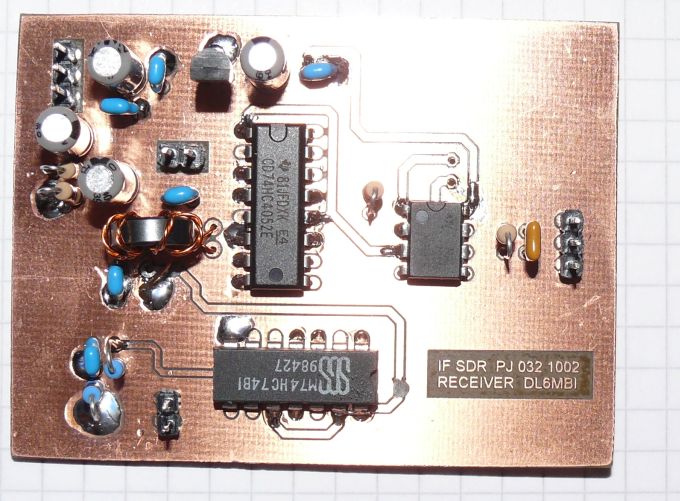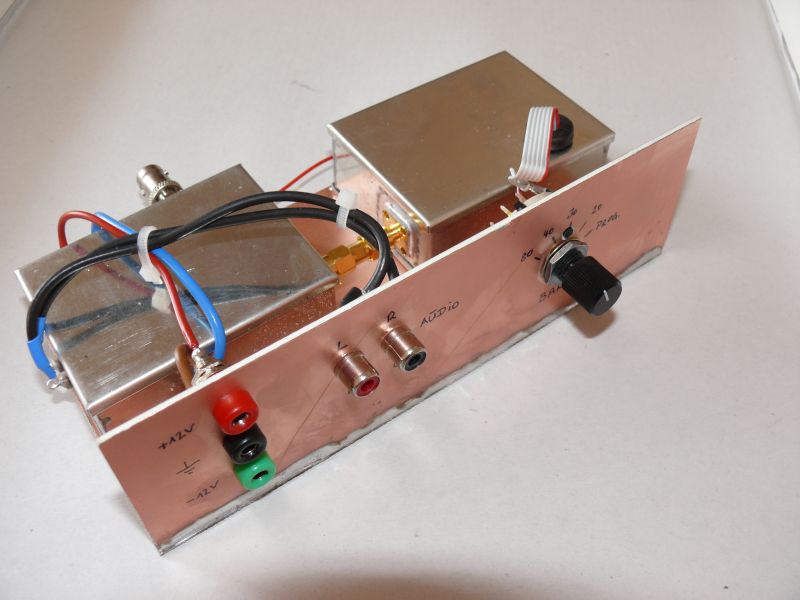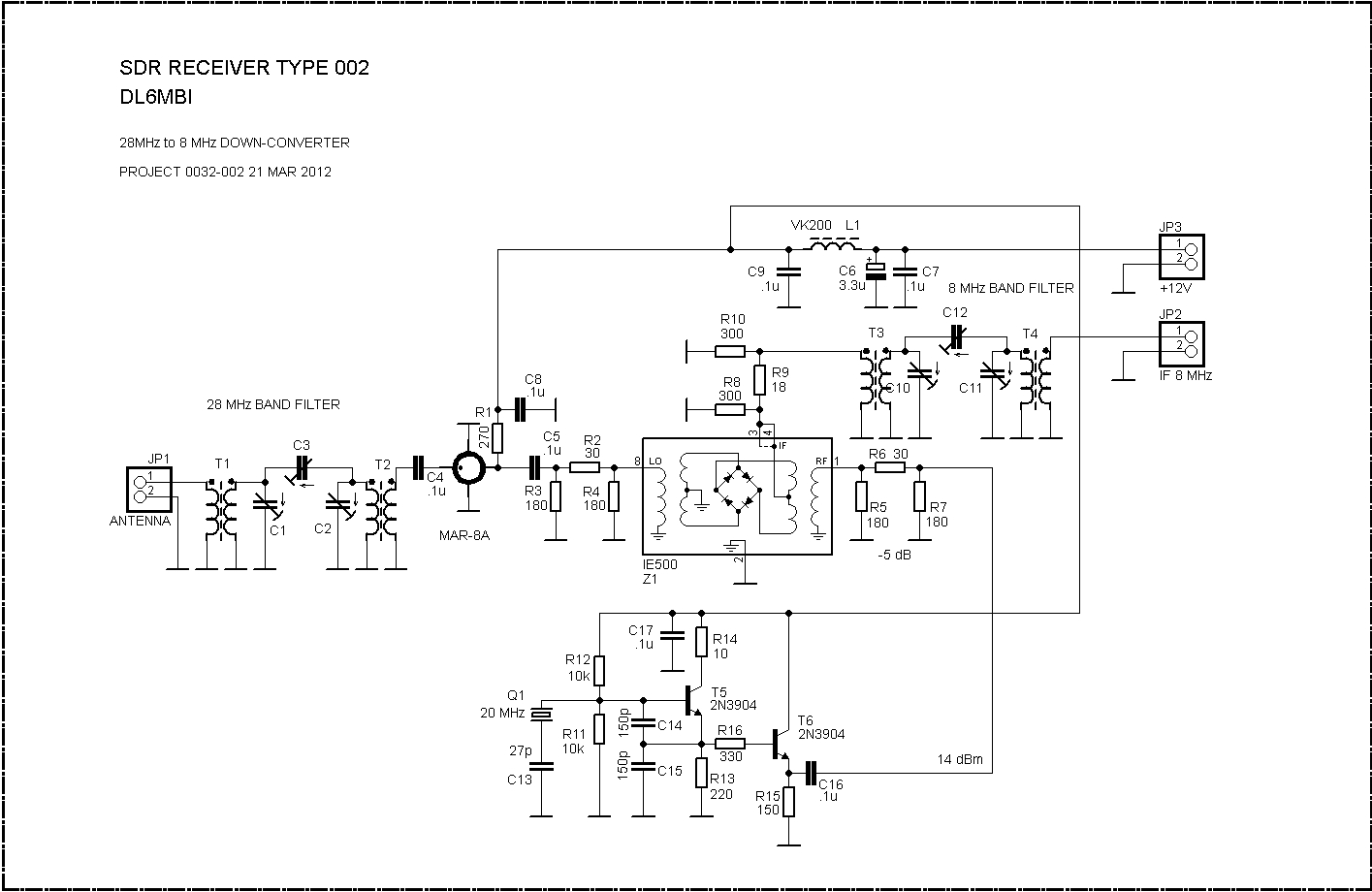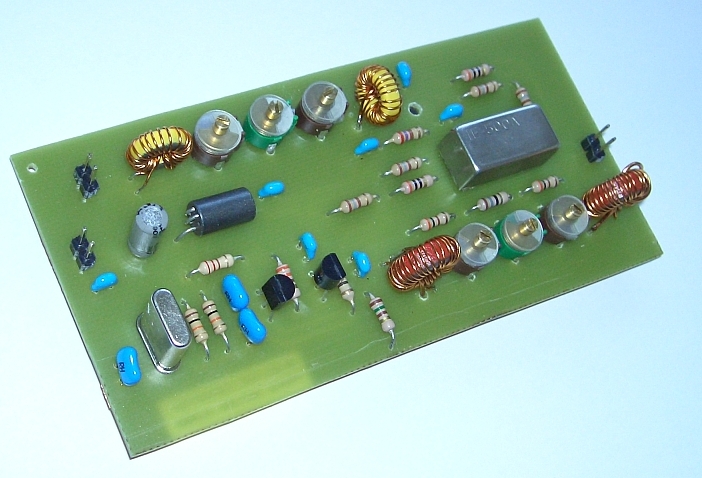 |
 |
Receiver PCB:
|
Complete experimental SDR receiver board:
|
| Project: SDR receiver for CwSkimmer and Reverse Beacon Network (RBN) See here my first try of a SDR receiver. It has a 74HC4052 mixer which I
found in my junk box. The oscillator is a CMOS version of a Silicon
Labs Si570. It has enough power to drive a 74HC74 divider (1:4,
180°
driving the mixer). Soundcard is an on-board type (Soundmax, 48 kHz).
Software is VE3NEA (Rocky, CW-Skimmer). This tiny RX is very
useful for 160-30m operation, although I used it for 20m, too.
|
 |
 |
Receiver PCB:
|
Complete experimental SDR receiver board:
|
|
"SDR receivers" usually are related to direct conversion receivers.
All known facts
regarding DC receivers must be taken into account. Grounding,
shielding, only the best power supply and a reliable computer sound
card are necessary to get reasonable results. Avoid ground loops where
ever possible! Some SDR receiver
projects suffer from disregarding of DC receiver fundamentals.
Although the SDR in this picture uses an unexpensive mixer (74HC4052)
and not the best OPs for that purpose (TL072) is has a remarkable
performance!
If the oscillator has no proper shielding it
could radiate RF from LO back to the connected antenna. This
certainly will cause hum and intermodulation. To prevent this, always
shield the oscillator with a metal housing. Do so with the RX, too. No
expensive parts are needed to be successful with your SDR project if
you regard those fundamentals. Always use a hum-free power supply.
Batteries are best choice, although a quality power supply will do it.
Notes: 1. Some soundcards needs decoupling capacitors (approx. 0,1uF) on their inputs. 2. One possible source of malfunctioning with a Si570 oscillator could be an impedance mismatch. If the Si570 will not work properly I'd recommend to try a 100 ohm load at the signal output. |
For 10m operation some extension is necessary
to a barefoot SDR. The used 74HC4052 mixer has aceptable performance up
to a maximum of about 15 MHz. For 28 MHz operation even faster devices
that a 74HC4052 might not be fast enough for reliable results.
Fortunately there's a simple solution.
SDR performance using "BUS switching mixers" (74HC4052 in this case) degrades significantly with raising
frequency. Therefore I designed a simple down-converter which converts
the 28 MHz input to 8 MHz. At those frequencies the performance of the
SDR is much better, even with fast switching SDR mixers. The results of
a 28 / 8 MHz down converter in conjunction with the above described SDR
and a simple on-board 48 kHz soundcard are really impressive.
See more here: BASCOM code for the Si570 oscillator (80/40/30/20m version) PCB layout for the 28 MHz down converter (10m version) Eagle download necessary to view the PCB. See Cadsoft website for more details. Feel free to send me an email for assistance if you are not so familiar with the Eagle PCB software from Cadsoft. |
 |
SDR RECEIVER and OSCILLATOR (click on picture for lager view)  |
 |
28 MHz Down-Converter (click on picture for larger v  iew) iew) |
 |
The SDR down-converter PCB has a "standard" size of 54x110 mm which fits into a Schubert case No. 6 IE500 mixer from the junkbox. Most other +7 dBm diode ring mixers (not all!) should be suitable. |